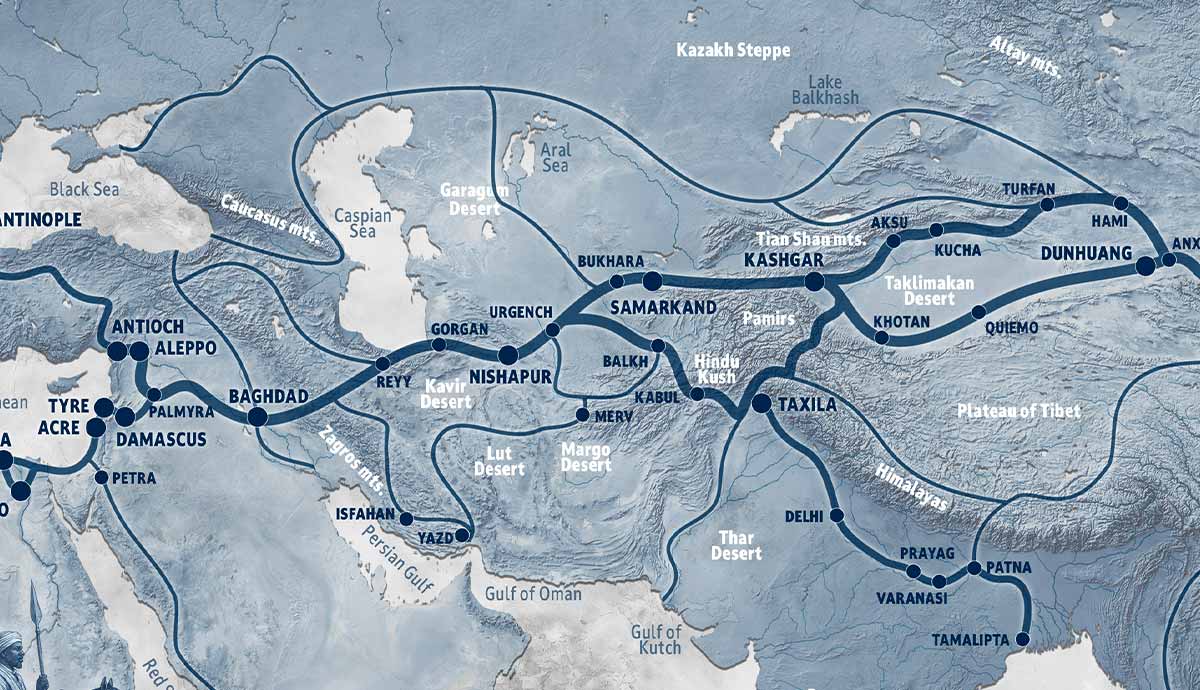
WWW.THECOLLECTOR.COM
10 Cities on the Silk Road Where the Past Still Feels Alive
The Silk Road was a major, intercontinental trading route that operated for several thousand years. Stretching from China to the Mediterranean, this ancient road acted as a conduit to transfer spices, tea, and silks across massive landmasses. Throughout the process, travelers on the Silk Road spread different ideas and religions to the destinations they visited.Today, you can travel to many cities on the ancient Silk Road and discover the important place they had in the past and how they look in modernity.1. TehranGolestan Palace at Tehran, Iran. Source: IStockModern-day Tehran shared a strategic location with Rhages, which was one of the major Silk Road trading hubs. All sorts of goods, like Persian handicrafts and silk, and rare spices like saffron, traveled along it.Today, Tehran is the capital of Iran and the cultural heart of the country. Visit to see places like the Grand Bazaar, where you can get a taste of what the Silk Road was like, and the Golestan Palace, a UNESCO site and architectural marvel.2. XianThe Museum of Qin Terracotta Warriors and Horses in Xian, China. Source: Wikimedia Commons.Xian, China, is one of the most fascinating spots on the Silk Road that you can visit today. This city was home to thirteen different Chinese dynasties and was once known as Changan, an important jumping-off point for people distributing porcelain, paper, and tea westward, as well as Buddhism.Today, you can visit Xian and see some fantastic relics from the Qin Dynasty, like the Terracotta Army and the ancient Xian city walls.3. CairoThe Saladin Citadel, Cairo. Source: WikipediaCairo, Egypt, is most notable for its fantastic pyramids, monuments, and ancient art, and it was also one of the most important parts of the Silk Road for uniting the Mediterranean with Africa. Major exports included linen and papyrus, and the citizens of Cairo benefited from silk and jewels from Asia.Visitors can visit the ancient pyramids of Giza and check out the Khan el-Khalili, where they can bring home some impressive local souvenirs.4. DelhiThe garden of the Red Fort in Delhi, India. Source: IStockThere are plenty of places to love in Delhi, India, and it was also an essential cultural hotspot during the time of the Silk Road. Silk and spice poured in from Asia, and cotton, indigo, and fine textiles left Delhi for the north.Visit Delhi today and see the famous Mughal Red Fort, or browse through the Chandni Chowk Bazaar, where you can haggle and find yourself some treasures.5. TbilisiAerial Picture of Tbilisi. Source: Wikimedia CommonsGeorgias ancient capital, Tbilisi, was a major spot on the Silk Road and one of the most important hubs in the Caucasus Mountains. Tbilisi exported local precious metals and wine, and theyre still famous for their vintages today.In addition to enjoying a delicious glass of Saperavi wine, visitors can wander through the maze of streets that makes up Old Tbilisi, hike to Narikala Fortress, and see some world-class theater.6. IstanbulThe Hagia Sophia, Istanbul. Source: Unsplash/Mark KonigIstanbul, Turkey, sits on two continents, Europe and Asia, and its full of historic gems. Its strategic position made it an ideal waypoint on the Silk Road. Famous Turkish carpets, spices, and silks traveled north from Istanbul during the Silk Roads heyday.Today, you can experience a bit of Turkish culture at the Grand Bazaar or see some of the citys incredible mosques, like Hagia Sophia.7. AthensMonastiraki Square and the Acropolis Hill, Athens. Source: Pexels/Jimmy TeohAthens, Greece, is a world-renowned city and an integral part of the Silk Road on the Mediterranean. Olive oil, marble, and ancient Greek knowledge, religion, and philosophy flowed out of Athens, spreading throughout the rest of Europe.Today, this destination is famous for its ancient history and host of UNESCO-recognized sites like the Acropolis.8. VeniceView over the Venice canals. Source: Unsplash/Brittany ChastagVenice, Italy, is a well-loved spot for art enthusiasts and once was one of Europes most important spots on the Silk Road. Spices and porcelain flowed into Venice, and wool and glass left the city, en route to faraway places in Africa and Asia.Visiting Venices museums is the number-one activity in the city, but you can also see Rialto Bridge and Market, an ancient trading post, to get a small experience of what the Silk Road must have been like.9. BeirutBeirut from above. Source: Unsplash/Piotr ChrobotAs one of the major Silk Road routes on the eastern Mediterranean, Beirut, Lebanon, was a major player in ancient international trade. They exported goods like textiles and dyes and imported perfumes and spices from Asia.Today, you can stroll along Beiruts incredible promenade and catch glimpses of the azure Mediterranean or wander through the souks. Beirut also has a fantastic national museum full of ancient artifacts.10. TashkentHazrat Imam Mosque in Tashkent Uzbekistan. Source: IStockTashkent, Uzbekistan, was one of Central Asias vital stops on the Silk Road. Spices, horses, and precious ceramics would flow out of Tashkent to places in Europe and Africa. They also had a cultural impact on the globe, exporting Islamic teachings and practices to different continents.Today, you can still experience the bustle of the Tashkent marketplace at Chorsu Bazaar or visit several religious sites, like the Khast Imam Complex.These fantastic destinations are all just an airplane ride away and allow you to walk in the footsteps of some of the most intrepid ancient travelers. Plus, you can still see some of the relics of the original Silk Road, visit ancient monuments and temples, and haggle at local markets to take home some memorable souvenirs of your own.If you liked this article, you may also enjoy learning about the 10 biggest cities of the Silk Road.
0 Reacties
0 aandelen
129 Views


